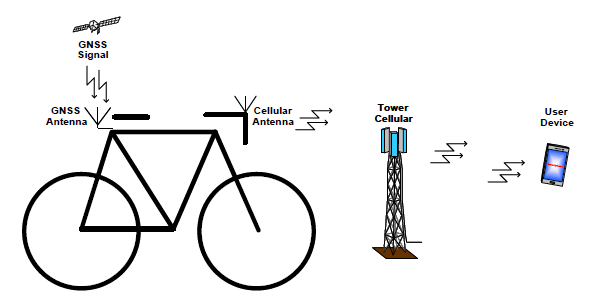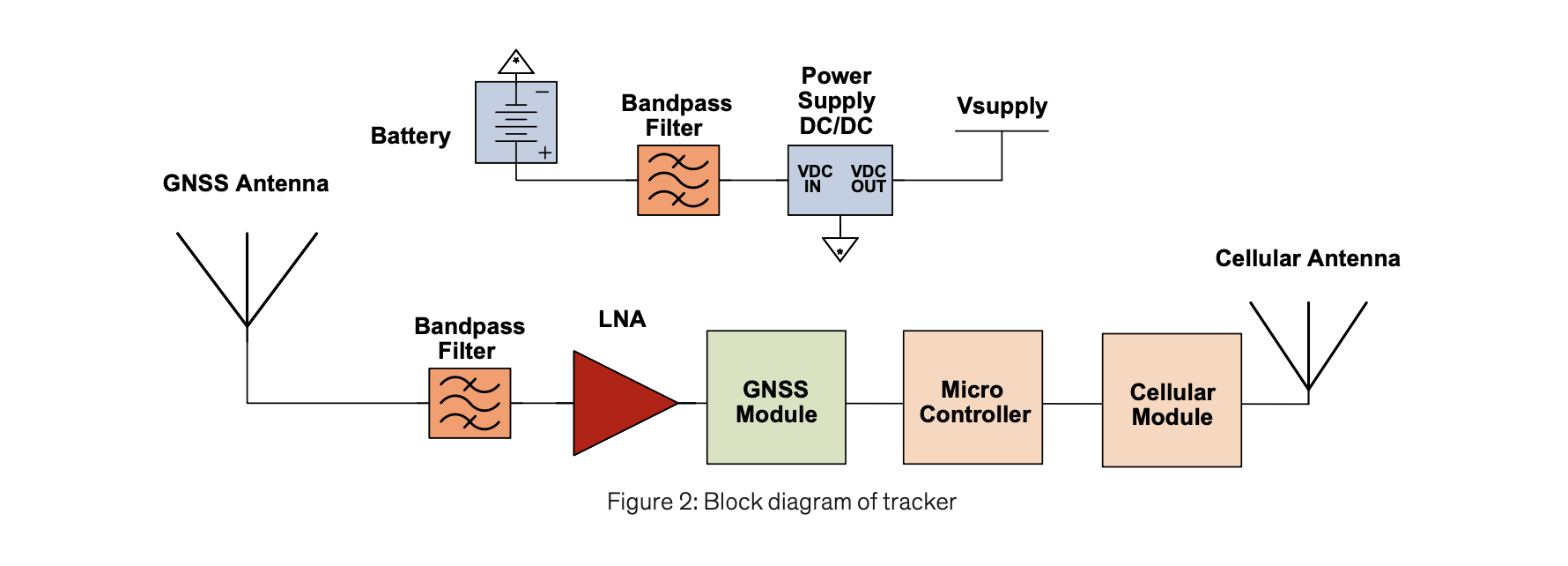Authors
Ian Collins
Head of Engineering – EMEA
Richardson RFPD
Markus Järve
Electronics Project Manager
Ampler Bikes
Jaan Viru
Kaarel Koppel
Talis Tiivoja
Krakul
May 2022
Consultation with RF and antenna experts at initial stages of the design was vital, as key decisions can be remedied at early stages but are nearly impossible to reverse at late stages
The growing popularity of electric bikes (e-bikes) creates demand for bike trackers to guard against theft. Ampler Bikes, with the assistance of design partner Krakul and component supplier Richardson RFPD, have developed a solution within a bike frame that allows users to track the bike’s location. This paper addresses the challenges of solution size reduction and of achieving good radio (RF) performance within a metal bike frame.
Background
E-bikes are not a low-cost item. They include motors, large batteries (typical example is 420 Watt-Hours (Wh)) and other electronic components to make them safe and easy to use. Bicycle theft remains a serious problem for most owners, with many cyclists (including this author) having had one or more bicycles stolen from them over their lives. Location trackers can be purchased and fitted to bicycles, however after-market solutions have drawbacks. They can be removed, which can defeat their purpose, and they require batteries to remain effective.
A far more effective solution is to design and build a location tracker into the e-bike itself, making removal a much more difficult and time-consuming task. As an integral part of the e-bike, the tracker can also share e-bike’s power supply, providing a seamless service to the owner. Ampler Bikes, along with Krakul design consultants and and RF and IoT components supplied by Richardson RFPD, have enabled an e-bike with a fully integrated tracker.
Solution
The diagram below (Figure 1) shows how the location of the e-bike is provided by the GNSS location device. This location information is then shared via LTE-CatM or other low data rate cellular M2M standard using cellular infrastructure, which provides the location to the user’s phone or other personal device. As these trackers become commonplace, the tracker technology will prevent resale of the item and assist law enforcement agencies in recovery of the stolen bicycle.
Engineering Challenges
A significant challenge to the integration of a location tracker into an e-bike is overcoming the limitations of the bike frame and their effect on achieving a good GNSS and cellular signal reception. The metal frame acts as a shield for the GNSS signal, and the sensitivity of the GNSS is greatly impacted by this. Space is also a concern, with the inside of a bike frame presenting a unique challenge. This challenge was overcome by creating a stacked PCB system with functionalities on different PCBs, which are then stacked together inside the bike. Keeping space in mind, small form factor components were chosen and divided into different sections by functionality. Power and main controls in one board and communication (GNSS, LTE-M/NB-IoT/2G) on the other.
During prototyping it was observed that because of such a compact design, some RF noise was coupling back to the power supply and making it unstable. Exact matching of the antenna solution was performed to boost performance and lessen unwanted influence of nearby circuits. It was critical that this matching accounted for the influence of the bicycle frame on the antenna performance. Due to the tight spacing of the design, additional specific filtering was added to protect sensitive circuits from RF transmit signal intrusion.
Proper antenna selection and placement was critical to good RF performance and the success of this project. Early consultation with RF and antenna experts at initial stages of the design was vital, as key decisions can be remedied at early stages but are nearly impossible to reverse at later stages. Antennas from Ignion and Taoglas were selected in preference to PCB antennas, as the manufacturing expertise of these antenna manufacturers reduces any variation due to PCB manufacturing tolerances.
The selected cellular antenna supports multiple frequency bands (LTE-Cat M, NB-IoT and 2G as a fallback), and it was observed that the orientation of this antenna with respect to the LCD affected the antenna’s performance in certain bands. To improve reception, antenna radiation patterns were measured, and the matching network was tuned extensively to reach desired performance. To further improve the performance of the GNSS, an external low noise amplifier (LNA) and filters were used before the GNSS receiver circuit. See Figure 2.
Having developed a successful prototype, the design then had to be engineered with manufacturability in mind. Special attention was paid to allow programming and testing of the devices during manufacturing. For this, a testbench was developed to run automated tests to ensure that the assembled boards are functioning and performing as designed. As the bike is intended to be used in various weather conditions, the electronics assembly was also potted and coated to withstand those rough environmental conditions. It is essential that the antenna design takes this potting and coating effect into account.
Conclusion
Knowledge and expertise in antennas and RF, together with innovations to keep size small, facilitated the placement of a location tracker circuit within the metal frame of a bicycle. The small size presented additional challenges which were solved by additional antenna matching and filtering.
About Richardson RFPD
Richardson RFPD, an Arrow Electronics company, is a global leader in the RF, wireless, IoT and power technologies markets. It brings relationships with many of the industry’s top radio frequency and power component suppliers. Whether it’s designing components or engineering complete solutions, Richardson RFPD’s worldwide design centers and technical sales team provide comprehensive support for customers’ go-to-market strategy, from prototype to production. More information is available online at richardsonrfpd.com.
About Ampler Bikes
Ampler Bikes is an Estonian direct to consumer brand that manufactures and sells light e-bikes. Founded in 2016 by a professional motocross racer, an engineer and a bicycle designer, Ampler launched their flagship e-bikes, the Ampler Curt, Stout and Stellar in 2018, and opened a showroom in Berlin in the same year. To date, Ampler has sold thousands of e-bikes across Europe, and has 130 people working between offices in Tallinn, Berlin and Cologne. More information is available online at amplerbikes.com.
Contact:
press@krakul.eu




